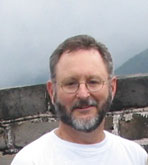

 |
Ken Dere | Department of Computational and Data Sciences, GMU The Sun has a very direct relationship with life on Earth. However, it is also of interest because it maintains a million degree corona, produces solar flares that emit high energy radiation, and ejects large plasma clouds into the solar system. Our understanding of the Sun is based, almost entirely, on remote sensing of its radiation at essentially all wavelengths in the electromagnetic spectrum. The discovery that the Sun has a million degree corona came about by the identification of forbidden lines of iron in the visible part of the spectrum by Edlen in 1943. Since that time we have come to understand that solar activity, including coronal heating, is associated with solar magnetic fields in ways that are still now well understood. The primary evidence for solar magnetic fields are in sun spots. Spectroscopic observations of the Zeeman splitting in photospheric lines allows the determination of the magnetic field strength at these temperatures. That analysis of solar spectra depends on atomic data that determines excitation and ionization processes in the corona. I will briefly review the various processes that are important in the formation of X-ray and UV spectra of the corona and their calculation through atomic databases such as CHIANTI. The heating of the solar corona is most likely to occur by means of magnetic field line reconnection. This process, as it occurs in the corona, is not well understood but generally requires gradients on spatial scales well below the capability of current instrumentation. The Hinode mission was launched in late 2006 to provide a comprehensive set of measurements in order to address the nature of coronal activity. In particular, I will describe observations made with the Hinode extreme-ultraviolet spectrometer of activity in the quiet Sun which appears to show the same kinds of activity as active regions but on smaller scales.
|